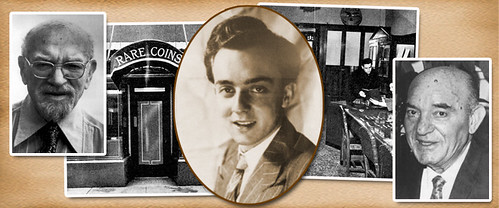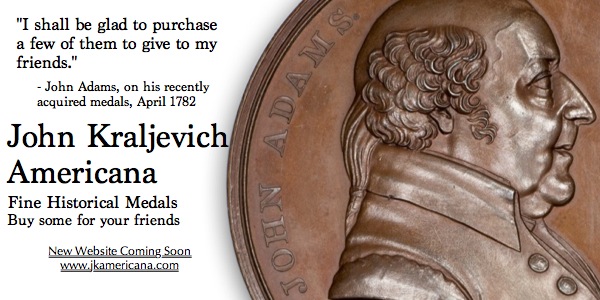
PREV ARTICLE
NEXT ARTICLE
FULL ISSUE
PREV FULL ISSUE
HARVEY STACK'S NUMISMATIC FAMILY, PART 16Harvey Stack's latest Stack's Bowers blog series focuses on growing up in a numismatic family. Here is part 16. -Editor
 It was essential that Stack's have the very best cataloging for the large cents. To do this, my father and uncle contacted Dr. William Sheldon, who in 1949 had published the definitive book entitled Early American Cents. Dr. Sheldon had studied most of the important collections during the time he had worked on the book. He condensed the information about dates and varieties, set up a new numbering system for the coins (Sheldon numbers) and a new grading system using adjectival and numerical grades in tandem. This revolutionized the entire classification and collecting of large cents. Dr. Sheldon was a close friend of both senior Stack's and so they approached him and showed him the two large cent collections. To him this was the find of the century, for neither of these collections had been seen earlier by him. Dr. Sheldon remarked after he saw both collections that they would force him to revise his earlier book and make a new Condition Census to guide cent collectors. He said that he would love to catalog the cents and my father replied that if Dr. Sheldon could get it done in time for sales in 1954 he could have the job. They shook hands and the deal was made. Dr. Sheldon lectured till about 5 PM at Columbia University each weekday. We made a schedule and a plan and I was put in charge of getting the work done. Dr. Sheldon would come to our offices on the days he could and have dinner in our shop (the Hotel Salisbury in our building had room service and we could order ahead). He worked from about 6 PM until 10 PM three times a week, and on Saturdays from 10 AM to 3 PM. C. Douglas Smith, an early date specialist, (who was a speed typist) was selected to work with him and help prepare manuscripts. Being in charge of this I saw less of my family, but with Uncle Joe often on the road and my father working everyday until dinner time, it was my job to retrieve the coins from the safe for the catalogers who worked at a desk across from me. I was to work with both of them to learn more about cents and, time permitting, I did some cataloging of the other coins in each collection. I learned a lot, having these two great large cent specialists as my teachers and hearing the discussions they had with each other. Since we planned to sell the Davis-Graves Collection first, we focused on those coins. The Davis-Graves Collection was unusual; it basically had one coin each year as its goal, from the half cent to the silver dollar, and in gold from the $1 to the $20. While in certain series it had mintmarked coins, the goal was not a complete set including all mintmarks, but one coin for each year. It was an unusual way to collect, but that was how it was done. Additionally, it had an extensive collection of Pioneer and Territorial gold, and a wonderful collection of gold and silver coins of the world, highlighted by a Polish 100 gold ducat of 1621. The Davis -Graves sale was one of great variety and quality, and it attracted hundreds of floor bidder and record mail and phone bids. The first sale was held in March at Steinway Hall, the concert hall that was one of Stack's neighbors on 57th Street. During this auction I met many new collectors and dealers and became friends with a budding young dealer, who was just starting out. It was Q. David Bowers. He was bright and wanted to learn how a firm like Stack's functioned. Prior to each session of our sales, David would pitch in and help us carry the needed auction material from our shop to the auction room, and even help set it up. When each session was over, Dave would help the staff pack up and take the material back to our offices. We became close friends, not knowing that over 50 years later we would have joined forces in the company that is Stack's Bowers Galleries today. Harvey's articles provide a wonderful back-stage view into the history of the numismatic hobby and business in the U.S. Thank you for sharing these great memories! -Editor
To read the complete article, see: To read the earlier E-Sylum article, see:  Wayne Homren, Editor The Numismatic Bibliomania Society is a non-profit organization promoting numismatic literature. See our web site at coinbooks.org. To submit items for publication in The E-Sylum, write to the Editor at this address: whomren@gmail.com To subscribe go to: https://my.binhost.com/lists/listinfo/esylum All Rights Reserved. NBS Home Page Contact the NBS webmaster 
|